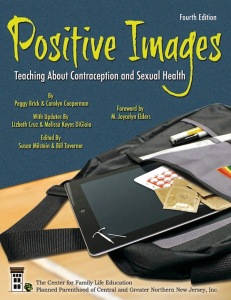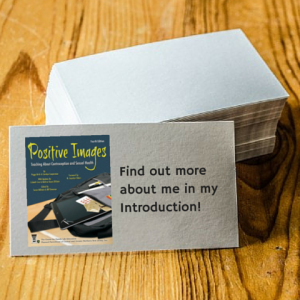This week I’m looking into Positive Images. This manual focuses on contraception, with a specific focus on how people judge contraception and the people who access it. The introduction of the third (and current) edition includes the following:
“This edition of Positive Images continues the tradition of creating positive images of contraception and of people who use it to have control of their lives and their futures. It includes abstinence from intercourse as a viable choice — for anyone at any time — and integrates that choice in developing the attitudes, values, and skills that are crucial for making responsible decisions regarding sexuality throughout life.”
But it is the following that really impresses me about this manual:
This manual is based on the conviction that young people have a right and a need to understand their sexuality. It provides opportunities for them to examine personal decisions within historical, social, and ethical contexts and promotes their development into sexually healthy adults.
What a beautiful and important sentiment! And with that beautiful introduction, let’s jump into a lesson:
High Risk, Low Risk, No Risk
Objectives
By the end of this lesson, participants will be able to:
- Understand that within the young adult and adolescent population, a wide range of normalcy exists with regard to sexual behavior.
- Identify the behaviors that put a person at risk for an unplanned pregnancy and/or sexually transmitted infection (STI).
- Assess whether they are at risk for an unplanned pregnancy or STI.
Rationale
Most young people are curious about how their personal behavior compares with that of others in their own age group. Perception of peers’ sexual behavior has been found to be an important factor influencing a young person’s personal sexual behavior(s). Other research indicates that young people commonly overestimate the extent of their peers’ sexual experience. Clearly, young people need a more accurate understanding of peer sexual behavior. This lesson supports the normalcy of a range of sexual expression and helps young people identify those behaviors that place an individual at risk for unplanned pregnancy and/or STI.
There are a lot of misunderstandings out there about what kind(s) of sexual activities put someone at risk for which diseases. With a heavy reliance on short stories and examples of sexual contact, this lesson provides students with many chances to assess sexual risk. It will prepare participants to consider not only their own sexual behaviors, but also their friends’ sexual decisions. The behaviors are assessed for both STI and pregnancy risk, which is a great approach. Understanding that sexual behaviors associated with STIs and pregnancies are different is so important and not something that is not frequently highlighted in lessons because they are typically addressed at separate times and students are left to draw their own conclusions.
Integrating information between subject areas is so important to help students draw connections between disparate units of information.







